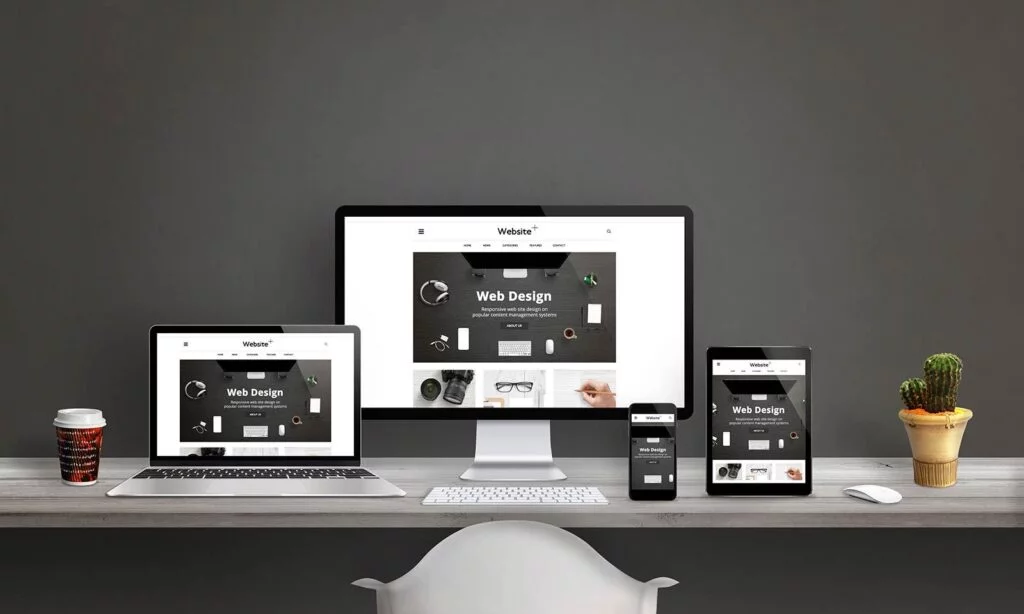How to Boost Online Performance With Web Design
- by Ilona K.

Table of contents
In today’s world, where competition is becoming increasingly fierce, you need to use any levers at your disposal to boost your website’s performance. Considering that 75% of users judge a business’s credibility based on its website’s design, its importance for attracting and retaining clients can’t be underestimated. Whether you already have a website or are just planning to create one, here are five ways to drive success online with web design.
Web design plays a key role in communicating with customers online as it helps visualise and convey information. The right website structure and design help guide the user to perform key actions, turning them into a profitable customer.
Investing in a professional website design, reflecting your brand’s identity and driving a good user experience is beneficial in multiple ways, helping your business to become successful. Here are five ways to make good web design work harder for your website’s overall performance.
Boost Website Discoverability in Search
To attract potential clients, you first need to help them discover your website. Search engine optimization (SEO) aims to make the website easier to discover through search. A website’s user friendliness and visual appeal are pivotal factors influencing its search engine rankings.
Search engines aim to provide users with the most relevant and satisfying online experience. Websites that offer intuitive navigation, fast-loading pages, and engaging visuals are rewarded with better search visibility. Conversely, websites that fail to meet these criteria may find themselves struggling to gain the online visibility necessary for discovery through organic search.
Carefully study how web design affects search engine algorithms, make changes accordingly and move onto the next step to help make your website better.
The same factors impact the overall digital marketing efforts. Even if you invest a lot in paid ads, an inconvenient interface and uninspiring design can result in users bouncing off the website, leaving you with a bill for clicks and reach.
Increase Quality Traffic
Once you’ve brought your website to the user’s fingertips, your next move is to attract and keep their attention.
The visual impression of a website is crucial. Web design is responsible for shaping users’ initial perceptions of your company. Much like attractive packaging, an appealing web design inherently produces a positive first impression that lasts.
Through creative and efficient design, you may not only astonish users, but also hold their attention to ensure they stay on the site and ideally perform a key action. Thoughtful web design can boost two key metrics; bounce rate and the quality of incoming traffic.
- Bounce rate is the percentage of site visitors who leave the site after viewing only one page with a 0 session duration without interacting with other pages on the site. A high bounce rate usually indicates that visitors are not finding what they were looking for on the site or that the site is not meeting their expectations.
- Traffic quality evaluates how relevant and targeted visitors are coming to your site. If visitors come to your site but they don’t represent your target audience or aren’t exploring the content, it could mean your traffic is low quality.
Once a user clicks on a link to your website, design can be a compelling reason to check out the brand and not leave immediately, effectively reducing the bounce rate. Moreover, a simple navigation interface can ensure the user clicks through the website and completes an action, increasing the quality of traffic.
A thriving business works with defined target audiences and possesses a deep understanding of its clients’ requirements. This principle extends to website design, which should align with the preferences of your target audience, drawing them in and guiding them towards a pivotal action.
Design aids in conveying a product’s essence and concepts, making it transparent and appealing to potential clients. It simplifies communication with customers, enabling them to grasp the product’s image, its usage, and its suitability for their needs.
In essence, your website’s design serves as the digital face of your business, and just like any well-thought-out product, it should resonate with your audience, delivering a seamless and engaging experience while leaving a lasting positive impression.
Drive Brand Recognition
Once you have brought and engaged your target audience on your website, your next task is to create a strong association between your brand and quality products/services online that serve the audience’s needs.
You have to ensure that potential customers recognise their need for your offerings and associate your brand with effective solutions for their needs. In essence, you must elevate brand recognition.
Visual components evoke specific associations with your company. Design elements collectively shape an impression of your business within the minds of your clients. They should harmonise with the corporate palette and use stylised elements to establish a cohesive and recognisable brand identity.
For instance, if you’re involved in eco-friendly products, incorporating green into your design conveys your brand’s commitment to natural products, health, and environmental consciousness. This draws in clients who resonate with these principles.
Elements such as logos, packaging, social media style, and website design aid in fostering brand recognition. Whenever your company is mentioned, a distinct image instantly springs to mind. Consider Coca-Cola; the mere mention evokes immediate recollection of their logos and signature brand colours.
Building a brand stands as a paramount task for business owners. It’s imperative that your website wholly embodies the essence of your products and garners swift recognition in the market. Following the creation of a website, be diligent in guaranteeing that your brand is identifiable across all platforms. Uphold consistency and stay the course; maintain uniformity in font, colour palette, and page layout across all web pages.
Differentiate From Competitors Online
Websites, much like the companies they represent, compete for customers. If your design has helped to facilitate the first three steps, now it’s time to differentiate from competitors.
Your goal is to create an attractive and satisfying user experience that your audiences will choose over the ones they can find on competitors’ websites. That is especially true for small and medium size businesses. Customers might still queue up for an iPhone, but if they can’t get what they want on your website without effort, they will leave and never come back.
Thoroughly examine your competitors’ websites to grasp their strengths and weaknesses. If they are embracing modern design trends, it’s essential to keep up. And don’t forget to revisit them from time to time; continuous refinement is crucial to engage and retain clients.
Amongst the companies offering similar services at comparable prices, the quality of service and website experience can be your distinguishing factors. Implement A/B testing, engage target groups, conduct surveys, and closely monitor statistics to gain insights into enhancing your website design and setting yourself apart from competitors.
Power Conversions With Good UX
So, you’ve made your website discoverable, gained users’ attention, created an association between your products and their needs, and persuaded them your offerings are better than the competition. What could go wrong? If your website design doesn’t power great usability at the crucial point of conversion, all the above efforts will be put to waste.
Great website design with a focus on usability can ensure that an influx of attention translates into long-term engagement and conversions. Well-organised menus and navigation logically facilitate site exploration, while clear visual guidance throughout the process of ordering goods or services, including user-friendly buttons, prompts and a streamlined transaction, ensures the user completes the order without friction.
Moreover, users tend to remember positive experiences; 74% of visitors are likely to come back if your site offers good mobile UX. So, the more considerate, contemporary, and user-friendly the website design, the higher the likelihood that potential clients will linger and revisit it in the future, creating a loyal customer base.
To sum up, a well-crafted website serves as your virtual storefront and can be the key to winning the trust and loyalty of your customers. Immediate results, like a growing client base, follow the launch of a well-designed website. Impressing potential clients is inevitable when encountering a genuinely professional website that integrates modern visual elements; its quality is palpable to every user.
Consistently refining and optimising your website design is a strategic investment that can pay substantial dividends in the fiercely competitive online market. Skimping on website design is certainly not advisable. In the long run, the cost of redesigning a website multiple times far exceeds the investment in selecting an appealing layout from the start.
Need more inspiration to achieve success online? Visit it.com Domains’ blog and contact us on social media.

Read also

Tips and Tricks
AI Appreciation Day: Top-10 Domain Names for AI Startups on it.com Domains
- 3 min read



